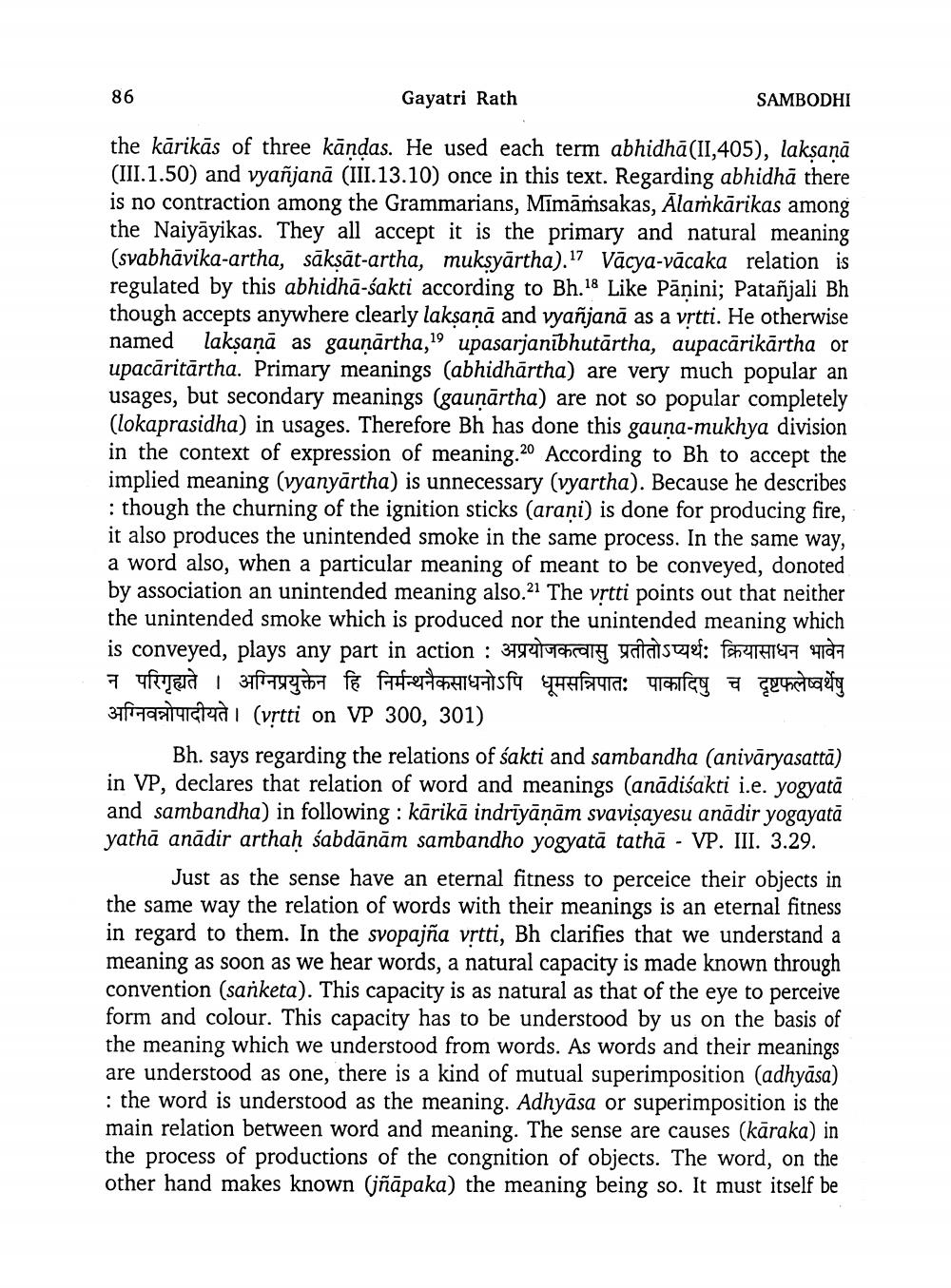________________
86
Gayatri Rath
SAMBODHI
the kārikās of three kāņdas. He used each term abhidhā(11,405), laksaņā (III.1.50) and vyañjanā (III.13.10) once in this text. Regarding abhidhā there is no contraction among the Grammarians, Mīmāṁsakas, Ālamkārikas among the Naiyāyikas. They all accept it is the primary and natural meaning (svabhāvika-artha, sāksāt-artha, muksyārtha).17 Vācya-vācaka relation is regulated by this abhidhā-sakti according to Bh.18 Like Pāṇini; Patañjali Bh though accepts anywhere clearly laksanā and vyañjanā as a vrtti. He otherwise named laksaņā as gauņārtha,19 upasarjanībhutārtha, aupacārikārtha or upacāritārtha. Primary meanings (abhidhartha) are very much popular an usages, but secondary meanings (gauņārtha) are not so popular completely (lokaprasidha) in usages. Therefore Bh has done this gauna-mukhya division in the context of expression of meaning.20 According to Bh to accept the implied meaning (vyanyārtha) is unnecessary (vyartha). Because he describes : though the churning of the ignition sticks (arani) is done for producing fire, it also produces the unintended smoke in the same process. In the same way, a word also, when a particular meaning of meant to be conveyed, donoted by association an unintended meaning also.21 The vrtti points out that neither the unintended smoke which is produced nor the unintended meaning which is conveyed, plays any part in action : अप्रयोजकत्वासु प्रतीतोऽप्यर्थः क्रियासाधन भावेन न परिगृह्यते । अग्निप्रयुक्तेन हि निर्मन्थनैकसाधनोऽपि धूमसन्निपात: पाकादिषु च दृष्टफलेष्वर्थेषु 31 Halluitadi (vrtti on VP 300, 301)
Bh. says regarding the relations of sakti and sambandha (anivāryasattā) in VP, declares that relation of word and meanings (anādiśakti i.e. yogyatā and sambandha) in following: karikā indrīyānām svavisayesu anădir yogayata yathā anādir arthah sabdānām sambandho yogyatā tathā - VP. III. 3.29.
Just as the sense have an eternal fitness to perceice their objects in the same way the relation of words with their meanings is an eternal fitness in regard to them. In the svopajña vrtti, Bh clarifies that we understand a meaning as soon as we hear words, a natural capacity is made known through convention (sanketa). This capacity is as natural as that of the eye to perceive form and colour. This capacity has to be understood by us on the basis of the meaning which we understood from words. As words and their meanings are understood as one, there is a kind of mutual superimposition (adhyāsa) : the word is understood as the meaning. Adhyāsa or superimposition is the main relation between word and meaning. The sense are causes (kāraka) in the process of productions of the congnition of objects. The word, on the other hand makes known (jñāpaka) the meaning being so. It must itself be




